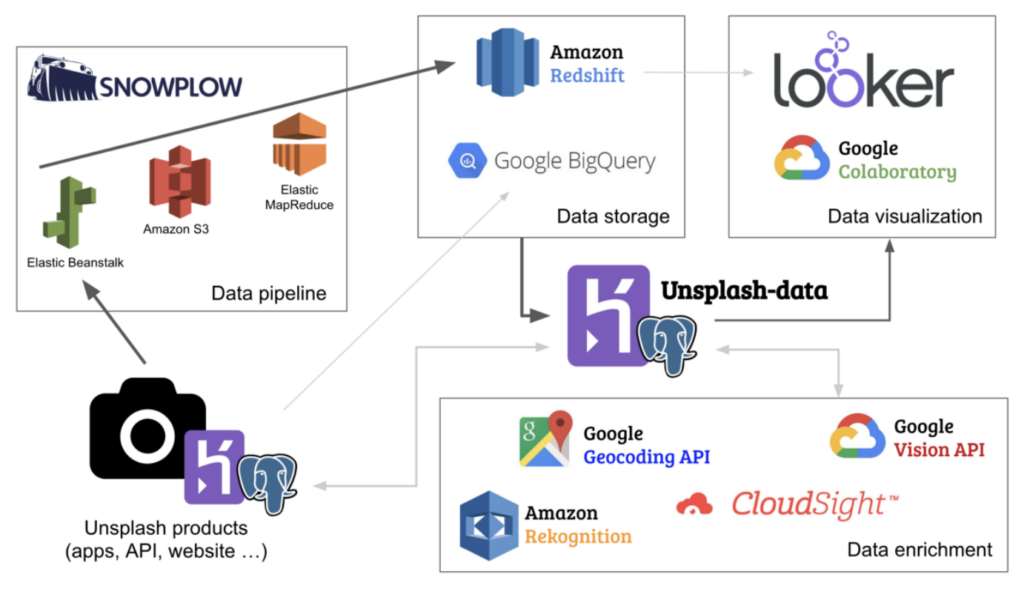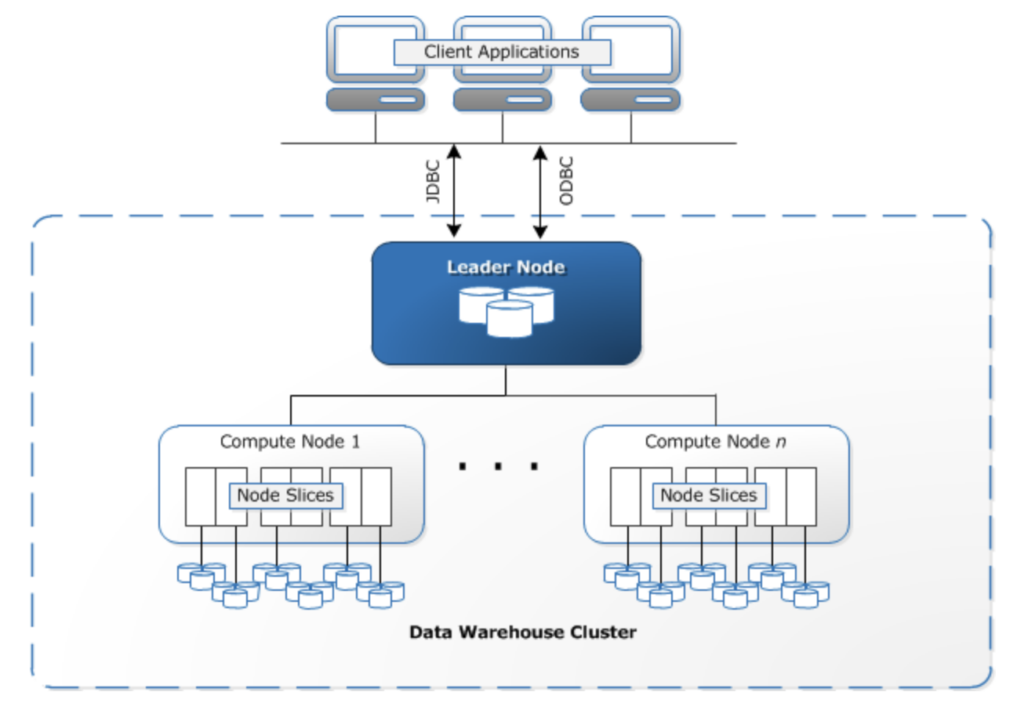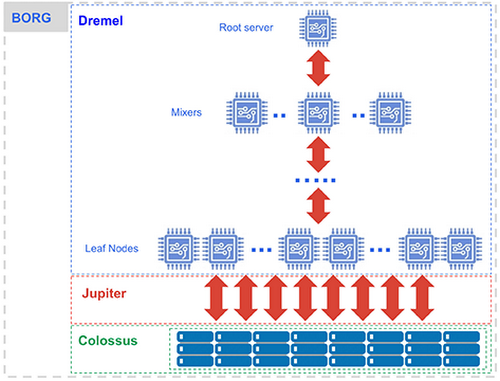Introduction
In today’s data-driven world, businesses rely on insights derived from analyzing large volumes of data to make informed decisions. Cloud data warehouses play a crucial role in enabling organizations to store and analyze massive amounts of structured and semi-structured data in near real-time. With the availability of various cloud-based data warehousing solutions, such as Amazon Redshift, Google BigQuery, and Azure Synapse Analytics, choosing the right option can be a challenge. This article aims to compare and contrast these leading cloud data warehouses, exploring their features, capabilities, and suitability for different use cases.

What is a Cloud Data Warehouse?
A cloud data warehouse is a centralized repository that brings together data from different sources, such as transactional systems, operational databases, and other data streams, to enable efficient analysis and reporting. Unlike traditional on-premise data warehouses, cloud data warehouses offer scalability, ease of use, and cost-efficiency. They can handle large volumes of data, provide fast query performance, and offer flexibility in terms of storage and computing resources.
Cloud data warehouses are designed to support a wide range of use cases, including business intelligence, data analytics, machine learning, and real-time data processing. They enable organizations to gain valuable insights from their data, make data-driven decisions, and uncover actionable business intelligence.
Amazon Redshift: Scalability and Performance
Amazon Redshift is a popular cloud data warehousing solution offered by Amazon Web Services (AWS). It is known for its scalability, performance, and cost-effectiveness. Redshift utilizes a columnar storage format, which allows for efficient compression and faster query execution. It uses massively parallel processing (MPP) architecture to distribute and parallelize queries across multiple nodes, resulting in high-performance analytics.
One of the key features of Amazon Redshift is its ability to scale up and down based on workload demands. Users can easily add or remove compute nodes to handle changing data volumes and query complexity. This scalability ensures that Redshift can handle large datasets and deliver fast query responses, even with complex analytical workloads.
Performance
Redshift is known for its excellent performance, particularly with large-scale data processing. It can handle various workloads and can scale up and down to accommodate changing demands. Redshift also offers features like zone maps and data compression to optimize query performance.
Administration
Managing and maintaining a Redshift data warehouse requires some level of administrative effort. Administrators can modify and tune clusters, scale the number of nodes, and partition data structures to improve performance. Redshift also provides automated incremental snapshots for data protection.
Data Protection
Redshift provides automated incremental snapshots, which track changes to the cluster and allow for point-in-time data recovery. Administrators can also take manual snapshots for additional data protection. Snapshots are stored internally in Amazon S3 with encryption at rest using SSL.
Security
Redshift offers various security features, including AES encryption at rest and support for customer-managed keys. It supports roles for access control and integrates with AWS Directory Service for federated user access. Redshift also allows launching clusters in an Amazon Virtual Private Cloud (VPC) for network security.
Compliance
Redshift satisfies compliance requirements for HIPAA, ISO 27001, PCI DSS, SOC 1 Type II, and SOC 2 Type II, among others. It provides the necessary controls and features to meet regulatory standards.

Amazon Redshift also offers various features to optimize query performance, such as automatic query optimization, workload management, and materialized views. It integrates seamlessly with other AWS services, allowing users to leverage additional functionalities like data ingestion, data transformation, and machine learning.
Google BigQuery: Serverless Analytics
Google BigQuery is a serverless cloud data warehousing solution provided by Google Cloud. It is designed to handle large-scale datasets and enable fast and cost-effective analytics. BigQuery’s serverless architecture eliminates the need for provisioning and managing infrastructure, making it easy to use and highly scalable.
BigQuery utilizes a distributed storage system called Colossus and an execution engine called Dremel. It supports massively parallel processing, allowing it to process terabytes to petabytes of data quickly. BigQuery also employs a columnar storage format and automatic data partitioning, which enhances query performance and reduces costs by scanning only the necessary data.

BigQuery architecture
One of the key advantages of BigQuery is its seamless integration with other Google Cloud services, such as Google Analytics, Google Sheets, and Google Data Studio. This integration allows users to easily ingest data from various sources, perform advanced analytics, and visualize the results using powerful visualization tools.
Additionally, BigQuery offers built-in machine learning capabilities, allowing users to apply machine learning models directly on their data. This enables organizations to derive predictive insights and make data-driven decisions.
Performance
BigQuery is designed to handle rapid analysis of terabytes to petabytes of data. Its serverless architecture allows for automatic scaling of compute resources, ensuring high performance for various workloads. BigQuery encrypts data at rest and in transit by default.
Administration
BigQuery requires minimal administration and management. With its serverless nature, it handles back-end operations such as data replication and scaling of compute resources automatically. Users can focus on analyzing data rather than managing infrastructure.
Data Protection
BigQuery provides automatic snapshots throughout the day to create restore points. Users can also manually trigger user-defined snapshots for additional data protection. Snapshot storage counts toward the overall storage allotment. BigQuery allows for restoring data warehouses from any snapshot.
Security
BigQuery encrypts data at rest and in transit by default. It supports customer-managed keys for added security. BigQuery also integrates well with other Google Cloud products and services and provides OAuth 2 for authorized account access.
Compliance
BigQuery complies with various industry standards and regulations, including HIPAA, ISO 27001, PCI DSS, SOC 1 Type II, and SOC 2 Type II. It offers the necessary features and controls to ensure compliance.
Azure Synapse Analytics: Unified Data Platform
Azure Synapse Analytics, formerly known as Azure SQL Data Warehouse, is Microsoft’s cloud-based data warehousing solution. It is designed to handle large-scale data processing and analytics workloads. Synapse Analytics offers a unified platform that combines data warehousing, big data processing, and data integration capabilities.
Synapse Analytics utilizes a distributed processing architecture, which enables it to process large volumes of data quickly and efficiently. It supports both relational and non-relational data, allowing users to perform complex analytics across various data types. Synapse Analytics integrates seamlessly with other Azure services, such as Azure Data Lake Storage and Azure Machine Learning, enabling organizations to build end-to-end data analytics solutions.

Azure Synapse Analytics architecture
One of the key features of Azure Synapse Analytics is its ability to handle both structured and unstructured data. It provides built-in support for Apache Spark, enabling users to perform big data processing and analytics on unstructured data sources. Synapse Analytics also offers data integration capabilities, allowing users to easily ingest data from various sources and perform data transformations.
Performance
Redshift is known for its excellent performance, particularly with large-scale data processing. It can handle various workloads and can scale up and down to accommodate changing demands. Redshift also offers features like zone maps and data compression to optimize query performance.
Administration
Managing and maintaining a Redshift data warehouse requires some level of administrative effort. Administrators can modify and tune clusters, scale the number of nodes, and partition data structures to improve performance. Redshift also provides automated incremental snapshots for data protection.
Data Protection
Redshift provides automated incremental snapshots, which track changes to the cluster and allow for point-in-time data recovery. Administrators can also take manual snapshots for additional data protection. Snapshots are stored internally in Amazon S3 with encryption at rest using SSL.
Security
Redshift offers various security features, including AES encryption at rest and support for customer-managed keys. It supports roles for access control and integrates with AWS Directory Service for federated user access. Redshift also allows launching clusters in an Amazon Virtual Private Cloud (VPC) for network security.
Compliance
Azure Synapse Analytics complies with industry standards and regulations, including HIPAA, ISO 27001, PCI DSS, SOC 1 Type II, and SOC 2 Type II. It provides the necessary controls and features for maintaining compliance.
Summary
In summary, Amazon Redshift, Google BigQuery, and Azure Synapse Analytics are all powerful cloud-based data warehousing solutions with their own unique features and advantages. Amazon Redshift offers a high level of control and customization, making it suitable for organizations that require extensive administration and optimization. Google BigQuery provides a serverless and easy-to-use environment, ideal for users who want to focus on data analysis rather than infrastructure management. Azure Synapse Analytics combines data warehousing, integration, and analytics in a unified interface, making it a comprehensive solution for organizations already using Microsoft Azure.
When choosing a cloud data warehouse, it is essential to consider factors such as architecture, pricing, performance, administration, data protection, security, and compliance. Each solution has its strengths and is suitable for different use cases and organizations. Conducting a thorough evaluation and testing with your own data can help determine which solution best fits your specific needs.
In conclusion, the choice between Amazon Redshift, Google BigQuery, and Azure Synapse Analytics depends on your organization’s requirements, preferences, and existing infrastructure. Evaluate each solution based on its features, performance, ease of administration, data protection, security, and compliance to make an informed decision that aligns with your data analytics goals.